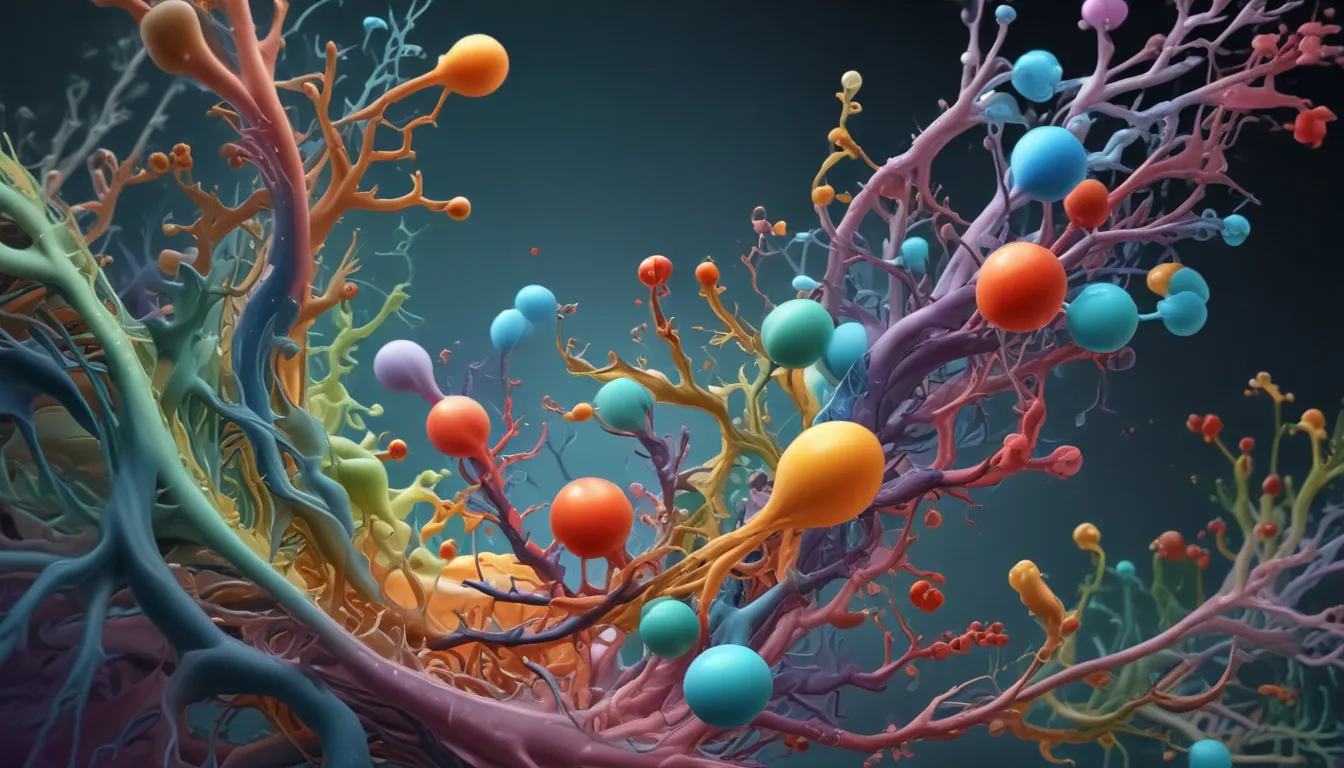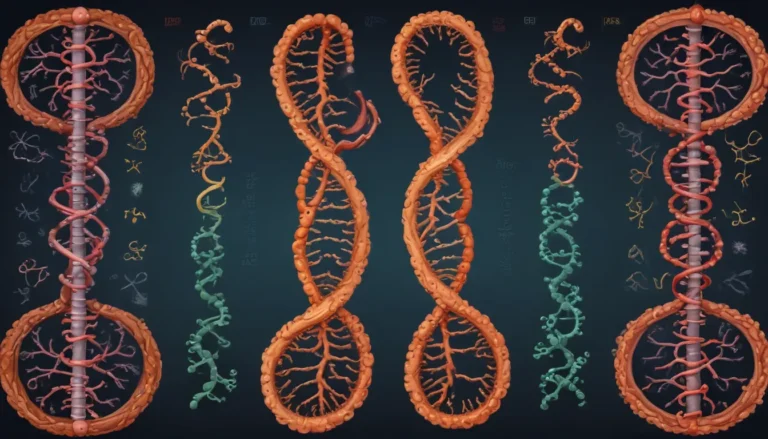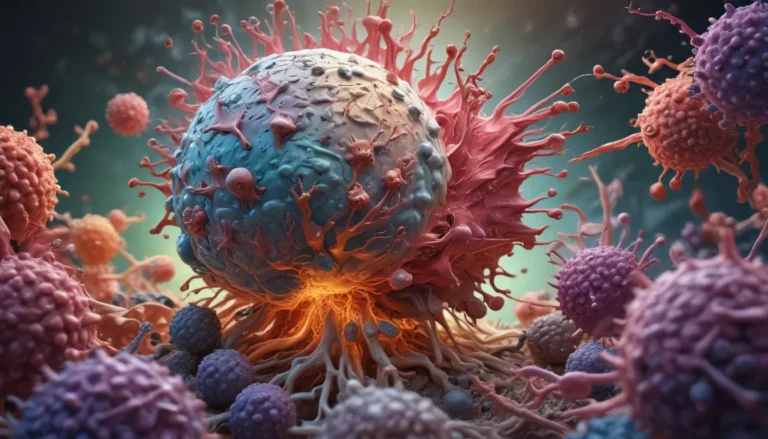A Note About Images: The images used in our articles are for illustration purposes only and may not exactly match the content. They are meant to engage readers, but the text should be relied upon for accurate information.
Enzymes, the unsung heroes of biological systems, are the catalysts that orchestrate a symphony of chemical reactions within cells. From metabolism to DNA replication, enzymes are indispensable for a myriad of biological processes. However, the magic lies not just in their catalytic prowess but in the exquisite dance of regulation that governs their activity. In this illuminating guide, we will unravel the mysteries of enzyme regulation and explore 18 astounding facts that underscore its complexity and significance in cellular function.
The Essence of Enzymes:
Enzymes are the molecular maestros that propel chemical reactions forward in living organisms. They serve as the driving force behind essential processes such as metabolism, digestion, and DNA replication, making them indispensable for life itself.
Delving into Enzyme Regulation:
The regulation of enzymes is a finely tuned mechanism that ensures optimal enzyme activity levels. By maintaining a delicate balance, regulation prevents the chaos that would ensue from excessive or insufficient enzyme function, safeguarding the integrity of cellular processes.
The Multifaceted Levels of Regulation:
Enzyme regulation operates on multiple fronts, encompassing gene expression, enzyme synthesis, post-translational modifications, and allosteric regulation. Each level contributes to the intricate web of checks and balances that control enzyme activity.
Unveiling Allosteric Regulation:
Allosteric regulation is a common type of enzyme regulation that involves the binding of regulatory molecules to specific sites on enzymes. This binding induces conformational changes, altering the enzyme’s shape and catalytic activity.
Orchestrating Cellular Harmony:
Enzyme regulation plays a crucial role in maintaining cellular homeostasis, ensuring that the intricate dance of biochemical processes remains in perfect equilibrium. By tightly controlling enzyme activity, regulation contributes to the overall balance within cells.
Navigating the Maze of Feedback Inhibition:
Feedback inhibition is a form of enzyme regulation where the end product of a metabolic pathway inhibits an enzyme in an earlier step. This mechanism prevents the overproduction of certain compounds, maintaining metabolic balance.
The Influence of Environmental Factors:
Changes in temperature, pH levels, and substrate availability can impact enzyme regulation, leading to modifications in enzyme activity and metabolic rates. These external factors play a significant role in shaping enzyme function.
Enzyme Regulation in Drug Development:
Understanding enzyme regulation is paramount in the realm of drug development. Pharmaceutical drugs target specific enzymes, either enhancing or inhibiting their activity for therapeutic purposes. Enzyme regulation serves as a crucial target for innovative therapies.
Embracing Reversible and Irreversible Modifications:
Enzyme regulation can manifest as reversible or irreversible modifications. While some mechanisms allow enzymes to transition between active and inactive states, others result in permanent changes that dictate enzyme activity.
The Intricacies of Protein-Protein Interactions:
Proteins can interact with enzymes to regulate their activity, either promoting activation or inhibiting function through direct binding interactions. These intricate interactions shape enzyme activity levels.
Unlocking the Power of Phosphorylation:
Phosphorylation, a common post-translational modification, involves adding phosphate groups to enzymes. This modification alters enzyme conformation and interactions with other molecules, influencing their activity.
The Impact of Covalent Modifications:
Chemical modifications such as methylation, acetylation, and glycosylation can regulate enzyme activity by modifying their structure. These covalent changes alter enzyme affinity for substrates, impacting their function.
Embracing the Influence of Small Molecules:
Small molecules, known as effectors, can bind to enzymes and modulate their activity by inducing conformational changes or altering substrate binding sites. These molecules play a pivotal role in shaping enzyme function.
The Autoregulation of Enzymes:
Certain enzymes can regulate their own synthesis through feedback loops. End products act as feedback signals, controlling gene expression and protein levels. This autoregulation mechanism ensures a fine-tuned balance within cells.
Adapting to Changing Conditions:
Enzyme regulation allows organisms to adapt to varying environmental cues by adjusting enzyme activity. This dynamic response optimizes metabolic pathways according to available resources, maintaining cellular efficiency.
Navigating Signaling Pathways:
Cellular signaling pathways transmit signals to enzymes, triggering changes in their activity levels. These pathways coordinate complex cellular responses, orchestrating a symphony of enzyme regulation.
The Crucial Role of Enzyme Regulation in Development:
Enzyme regulation is indispensable during embryonic development and morphogenesis, ensuring proper tissue differentiation and organ formation. Precise regulation of enzymes is essential for the orchestration of biological processes.
Embracing the Dynamic Nature of Enzyme Regulation:
Enzyme regulation is not a static phenomenon but a dynamic process that allows for fine-tuning and adaptation to the ever-changing cellular environment. This dynamic nature ensures cellular processes are finely regulated.
Conclusion: Celebrating the Marvels of Enzyme Regulation
In conclusion, the regulation of enzymes is a captivating journey into the intricate workings of biological systems. From allosteric regulation to post-translational modifications, enzymes are finely tuned to ensure optimal activity and efficiency. The precise control of enzyme activity enables cellular homeostasis, adaptation to changing environments, and essential biological functions. By unraveling the complexities of enzyme regulation, scientists pave the way for innovative therapies and a deeper understanding of life itself.
FAQs: Your Guide to Enzyme Regulation
-
What is enzyme regulation?
Enzyme regulation refers to the mechanisms and processes that control enzyme activity in biological systems, allowing cells to adjust enzyme function as needed. -
How do enzymes regulate their own activity?
Enzymes can regulate their own activity through feedback inhibition, where the product of a reaction inhibits enzyme activity when it reaches a certain threshold. -
What are allosteric enzymes?
Allosteric enzymes are enzymes regulated by molecules binding to sites other than the active site. This binding can either activate or inhibit enzyme activity. -
What is the role of post-translational modifications in enzyme regulation?
Post-translational modifications modify enzyme activity, stability, and localization. They serve as key regulatory mechanisms in controlling enzyme function. -
How is enzyme regulation relevant in medicine?
Understanding enzyme regulation is crucial in medicine for developing drugs that target specific enzymes and modulate biological processes associated with various health conditions.
Exploring the Intricacies of Enzyme Regulation: A Journey of Discovery
Unraveling the intricate dance of enzyme regulation unveils a world of precision and complexity within biological systems. Each facet of regulation, from allosteric control to post-translational modifications, adds a layer of intrigue to the orchestration of cellular functions. As we navigate the realm of enzyme regulation, we gain a deeper appreciation for the elegant mechanisms that drive life’s essential processes. Join us on this journey of discovery as we celebrate the marvels of enzyme regulation and its profound implications for science and medicine.






